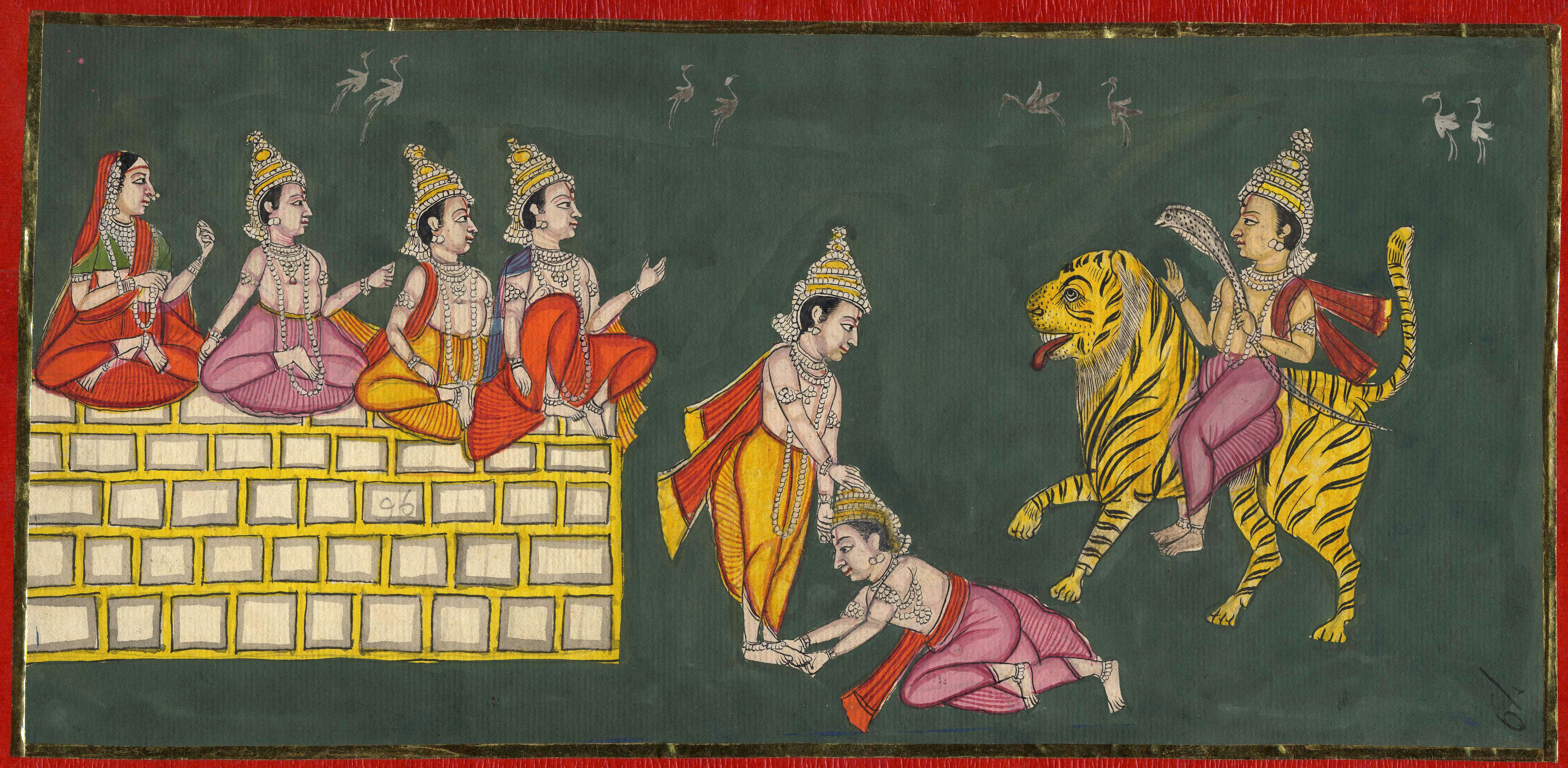Nivruttinath on:
[Wikipedia]
[Google]
[Amazon]
Nivruttinath ( Marathi : निवृत्तिनाथ) (c. 11 February 1273 – 24 June 1297) was a 13th-century Marathi Bhakti
 The Natha Tradition is an initiatory Guru–shishya tradition. After the death of their parents, Nivruttinath initiated Dnyaneshwar into the Nath tradition and become his teacher (Guru).
Nivruttinath advised Dnyaneshwar to write an independent philosophical work. This work later came to be known as
The Natha Tradition is an initiatory Guru–shishya tradition. After the death of their parents, Nivruttinath initiated Dnyaneshwar into the Nath tradition and become his teacher (Guru).
Nivruttinath advised Dnyaneshwar to write an independent philosophical work. This work later came to be known as
saint
In Christianity, Christian belief, a saint is a person who is recognized as having an exceptional degree of sanctification in Christianity, holiness, imitation of God, likeness, or closeness to God in Christianity, God. However, the use of the ...
, poet, philosopher and yogi of the Vaishnava
Vaishnavism () ), also called Vishnuism, is one of the major Hindu traditions, that considers Vishnu as the sole supreme being leading all other Hindu deities, that is, '' Mahavishnu''. It is one of the major Hindu denominations along wit ...
Nath tradition. He was the elder brother and the mentor (guru) of Dnyaneshwar
Sant Dnyaneshwar (Marathi pronunciation: ̪ɲaːn̪eʃʋəɾ, (Devanagari : सन्त ज्ञानेश्वर), also referred to as Jñāneśvara, Jñānadeva, Dnyandev or Mauli or Dnyaneshwar Vitthal Kulkarni (1275–1296 (living ...
, the first Varkari saint.
Family and early life
Nivruttinath was born in Apegaon village on the bank of Godavari river near Paithan in Maharashtra into aDeshastha Brahmin
Deshastha Brahmin is a Hinduism, Hindu Brahmin caste, subcaste mainly from the Indian state of Maharashtra and North Karnataka. Other than these states, according to authors K. S. Singh, Gregory Naik and Pran Nath Chopra, Deshastha Brahmins a ...
family during the reign of the Yadava
The Yadava (), not to be confused with Yadav, were an ancient Indian people who believed to have descended from Yadu (legendary king), Yadu, a legendary king of Chandravamsha lineage.
The community was formed of various clans, being the #T ...
King Ramadevarava.
Nivruttinath was one of the four children, and the eldest son, of Vitthalapant, a kulkarni (hereditary accountant), and Rakhumabai. Vitthalpant did atonement for the acceptance of his children in society.
Vitthal Panth and his wife were suggested to give up their life to get rid of the ex-communication as Vitthal Panth was believed to be a sannyasin but after the birth of his children, Orthodox Brahmins of the day saw a renunciate returning to his life as a householder as heresy and Nivruttinath and his siblings were denied the right to have in society.
Vitthal Pant and his wife gave up their lives, within a year by jumping into the Indrayani River, leaving their child behind. after that nivrutti had to look after his siblings. Being creative poet and philosopher,Nivrutti suggested his younger brother Dnyaneshwar to translate Geeta which was written in Sanskrit into Marathi language in order to get the people know easily. He offered Dnyaneshwar his entire spiritual wealth and achievement.
Nath Tradition
At around the age of 10, Nivruttinath's family moved to Nashik. During a pilgrimage trip, Vitthalapant along with his family was confronted by a tiger. The family escaped while Nivruttinath got separated from the family. He hid in a cave on the Anjani mountain where he met Gahaninath, who initiated Nivruttinath into the wisdom of the Nath tradition.Dnyaneshwar as disciple
 The Natha Tradition is an initiatory Guru–shishya tradition. After the death of their parents, Nivruttinath initiated Dnyaneshwar into the Nath tradition and become his teacher (Guru).
Nivruttinath advised Dnyaneshwar to write an independent philosophical work. This work later came to be known as
The Natha Tradition is an initiatory Guru–shishya tradition. After the death of their parents, Nivruttinath initiated Dnyaneshwar into the Nath tradition and become his teacher (Guru).
Nivruttinath advised Dnyaneshwar to write an independent philosophical work. This work later came to be known as Amrutanubhav
Amrutanubhav or Amritanubhav is a composition by the Marathi people, Marathi saint and poet Jñāneśvar during the 13th century. It is considered to be a milestone in Marathi literature.Budkuley, K. I. R. A. N. (2005). Indo-European storytelling ...
.
Death and Resting Place
After the Samadhi of Dnyaneshwar, Nivruttinath left Alandi with his sister, Muktabai for a pilgrimage. During a thunderstorm, Muktabai was lost. Nivruttinath then attained Samadhi. The Resting place is situated near Trimbakeshwar. At his resting place, a temple has been erected which is visited by numerous devotees.See also
*Dnyaneshwar
Sant Dnyaneshwar (Marathi pronunciation: ̪ɲaːn̪eʃʋəɾ, (Devanagari : सन्त ज्ञानेश्वर), also referred to as Jñāneśvara, Jñānadeva, Dnyandev or Mauli or Dnyaneshwar Vitthal Kulkarni (1275–1296 (living ...
* Sopan
Sant Sopandeo was a sant of the Varkari and also the younger brother of Dnyaneshwar.
Sopan(19 November 1277 A.D- 29 December 1296 A.D), attained samadhi at Saswad near Pune. He wrote a book, the ''Sopandevi'' based on the Marathi translation ...
* Muktabai
* Bhakti movement
The Bhakti movement was a significant religious movement in medieval Hinduism that sought to bring religious reforms to all strata of society by adopting the method of Bhakti, devotion to achieve salvation. Originating in Tamilakam during 6t ...
* Changdev Maharaj
References
Bibliography * * * * {{refend Marathi-language writers Warkari Hindu philosophers and theologians Marathi Hindu saints